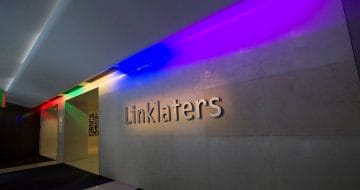An American culture is coming for the politer British model, warns our anonymous City insider

UK law firms’ financial results season has made for some interesting reading.
On the surface, it looks like the Magic Circle might be striking back against their US competitors’ home turf. Allen & Overy is the clearest example of this. In this year’s results it generated over half of its global revenue growth from its activities in the US. Freshfields is the other prominent example. The firm confirmed that it has been on a US hiring spree, doubling the headcount of its Silicon Valley office that opened in 2020. So, as US firms become yet more prominent in the City market (Latham & Watkins and Kirkland & Ellis now both generate more revenue from London corporate deals than the Magic Circle), is the fightback on?
In the past, British firms have struggled to gain traction across the Atlantic. Linklaters and Freshfields’ efforts date back to the 70s, whilst A&O first launched in New York in 1985, but have failed to weaken US firms’ grip over their Wall Street clients. Still unsatisfied, these firms were left racking their brains over possible mergers to try and find a solution — A&O got close to one in 2019 though in the end its talks with US outfit O’Melveny & Myers fell through when sterling moved sharply against the Dollar during the final stages.
Clifford Chance‘s disappointment after it went out in pursuit of the Californian dream is a particularly telling parable. The firm made a foray into California in 2002, only to find itself closing its new offices in Palo Alto, Los Angeles and San Diego by 2007. At the time, Clifford Chance was the world’s largest law firm by revenue. Yet it appears it could not consolidate its position in Silicon Valley. Why?
Legal recruiters in the area at the time could easily identify the problem: the Magic Circle firm was not able to recruit enough lawyers owing to its inability to break away from its culturally engrained lockstep pay structure which saw partners paid by seniority rather than the revenue they had generated for the firm. In short, the more polite British tradition of respecting firm elders couldn’t cut it in the face of dollar-eyed pinstriped Americans.
This comment from a midlevel associate across the pond at Kirkland & Ellis for American Lawyer’s Midlevel Associates Survey really sums up the US mentality: “I used to think that I was the most money-hungry person out there, but working at Kirkland has made me realise that, as much as I love money, there are A LOT of people that apparently love it more than I do.”
Since then, these British firms seem to have seen the error of their ways. What has followed is a tweak to salaries where the US office becomes an exception to the lockstep system. In June last year, A&O matched the Davis Polk pay scale for its offices in Los Angeles, New York and Washington D.C. (see below). Davis Polk have since moved to Cravath scale (the standard-setters for law firm pay). Linklaters felt compelled to follow suit just a few weeks later at the beginning of March.
US payscales
| Class year | Davis Polk scale | Cravath scale |
| 2014 | $350,000 (£287,000) | $415,000 (£341,000) |
| 2015 | $330,000 (£271,500) | $400,000 (£329,000) |
| 2016 | $305,000 (£251,000) | $370,000 (£304,000) |
| 2017 | $275,000 (£226,000) | $345,000 (£284,000) |
| 2018 | $240,000 (£197,500) | $295,000 (£242,500) |
| 2019 | $215,000 (£177,000) | $250,000 (£205,500) |
| 2020 | $205,000 (£168,500) | $225,000 (£185,000) |
| 2021 | N/A | $215,000 (£177,000) |
The Magic Circle have also been pushed to make ambitious hires with multi-year salary guarantees. Intellectual property lawyers have proved to be some of the most sought after with A&O offering lucrative deals to raid Goodwin Procter and White & Case IP partners for its Silicon Valley clients. IP litigation with jury trials is notably much bigger bucks than in jurisdictions like England and Wales or Germany.
Both UK-headquartered firms and US Wall Street firms have made head turning hires in their competitors’ heartland. For example, back in 2017 Kirkland & Ellis grabbed the attention of the City legal market by knabbing Freshfields’ star partner David Higgins in a reported $10 million-a-year deal. Freshfields hit back in 2021 by hiring M&A hotshot Damien Zoubek from Cravath which very rarely suffers from any lateral raids (Cravath has a mystique comparable to Slaughter and May in the UK for those unfamiliar with the US firm that gave its name to the top-end payscale).
But, in the midst of the battle, it is clear that the winner from all this is currently US law firms’ culture and strategy. US firms are amongst the most profitable in the world with the likes of Wachtell, Lipton, Rosen & Katz, Kirkland & Ellis, Davis Polk, Sullivan & Cromwell and many more drumming up PEP figures that the Magic Circle could only dream of.
The US firms also have other tricks up their sleeves. Their practice of speedily promoting associates to salaried partners allows these lawyers to bill at a partner level sooner than their British counterparts. This is why looking at the marginally lower partner billable rates at US firms, as covered by Legal Cheek last week, is somewhat misleading.
The ‘eat-what-you-kill’ model — whereby partner compensation is based on the revenue they generate for the firm — appears to have consumed British manners. And this may be causing the tectonic plates of global megafirms to shake. Although giving way to US payscales in their American offices might feel like an amazing magic trick or a special exception for the good of the firm, the spell of the sacrifice could be wearing off.
Talking to the Financial Times, A&O’s US Senior Partner Tim House recently noted: “I don’t know what [London-based partners’] tolerance is to watching other people get huge pay cheques. It’s a bunch of sensitive fragile egos in this industry.”
Recent research suggests that the London legal market remains a prime target for US law firms. So the challenge to UK law firm culture is unlikely to change. It is likely that the highly profitable likes of Macfarlanes and Slaughter and May who have not opted for the megafirm model could well become the last bastions of truly British legal culture. However, the Wolves of Law Street are not immune to facing challenges of their own. With a two-tiered partnership made up of equity and salaried partners and a culture centred first and foremost around money rather than personal ties and loyalty can be dangerous… even for a wolf.
City Insider has keen interest in all things City law.


